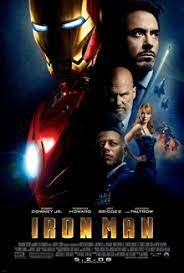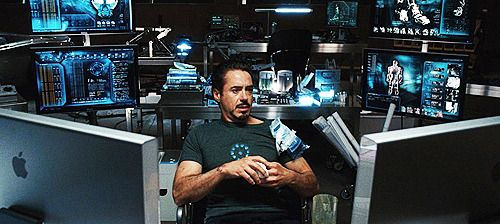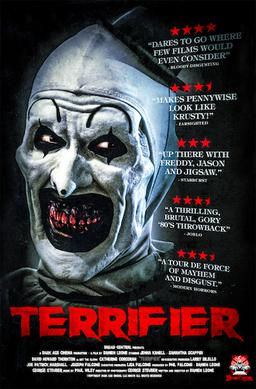Iron Man (2008) review
- Jeremy Kelly
- Jun 16, 2022
- 5 min read
Iron Man (2008)
Directed by: Jon Favreau
Produced by: Avi Avrad, Kevin Feige
Screenplay by: Mark Fergus, Hawk Ostby, Art Marcum, Matt Holloway
Starring: Robert Downey Jr., Terrence Howard, Jeff Bridges, Shaun Toub, Gwyneth Paltrow

In the mid 2000s, live-action comic book movies were just starting to become big again; the “X-Men” films brought a terrific group of mutant superheroes to the big screen for the first time, Sam Raimi was pushing the envelope with his extremely lucrative “Spider-Man” trilogy, and Christopher Nolan had pulled Batman out of the depths with the beginning of his “Dark Knight” series. The time was right to begin what would become one of the biggest cinematic endeavors of all-time: the Marvel Cinematic Universe. To date, there have been 28 films produced by Marvel Studios based on Stan Lee’s creations brought to the big screen, and today I’m reviewing the one that started it all, “Iron Man.” After several failed development attempts in the ‘90s, Marvel finally struck gold…or iron, you might say; the origin story of billionaire industrialist and weapons manufacturer Tony Stark (Robert Downey Jr.) who builds a suit of armor and becomes a superhero, it’s still a slick and smart film, one worth looking back on fondly after all the ambition and scale the MCU has achieved.
The film opens with Stark, the enigmatic CEO of defense contractor Stark Industries, demonstrating new weapons in war-torn Afghanistan. But his military convoy is ambushed, and Stark is captured by a terrorist group, being wounded in the process. The terrorists—who are using trafficked Stark technology—want Tony to build them a missile, but he secretly makes an armored suit powered by an arc reactor through an electromagnet implanted in his chest following the ambush as a means to escape. Upon returning home, Stark announces a cease on manufacturing weapons, which worries the people in his inner circle: personal assistant Pepper Potts (Gwyneth Paltrow), lieutenant colonel James “Rhodey” Rhodes (Terrence Howard), and company manager Obadiah Stane (Jeff Bridges), his father Howard’s old partner. Recognizing the damage his brand is doing, Tony changes tactics and builds a new and more powerful suit of armor, looking to right certain wrongs even as old trusted hands are trying to usurp his newfound idealism.

In some ways, Robert Downey Jr. is the perfect choice to play Tony, who starts out as the epitome of excess and gradually realizes the price that comes with it. Back in the late ‘80s and early ‘90s, Downey—the son of countercultural filmmaker Robert Sr.—was a thriving young hotshot, first as a member of the Brat Pack and then appearing in powerhouse films like “Natural Born Killers,” “Short Cuts” and “Chaplin,” which earned him an Oscar nomination. But by the turn of the millennium, he was in a slump perpetuated by well-documented drug and alcohol charges; however, by the time 2006 came around, he was three years sober and having a mild comeback tour, though still not considered a dependable box office draw. I say all this because it makes for such interesting parallels between Downey and Stark. He’s intelligent but unreliable, charismatic but a serial womanizer, on top of the industrial world but always a risk to knock himself off. Watching him grow and develop into a more humanitarian purpose while still maintaining just the right amount of arrogance is a tremendous joy, and now it’s almost impossible to separate this persona from Downey himself.
Can I just say there are few things as satisfying as the sound of Iron Man powering up his blasters before firing? Okay, moving past that little trinket, this movie does a great job with the build-up to the actual superhero stuff. I know this character is commonly viewed as Marvel’s answer to Batman, with the powerless billionaire fighting crime, and yes, there are aspects of the story that will remind you of “Batman Begins.” But what makes Stark unique is how he acknowledges his missteps, realizing the tools he’s created under the guise of strength is actually crippling people in need. Also, he pretty much surrounds himself in this advanced technology; some of the most fun scenes are just with Tony in his lab working on the reactor, putting stuff together, running flight trials, etc. However, the second half of the movie is definitely the weaker, and the action plays a part of it; the scenes with Iron Man flying around are cool, but the actual combat is pretty mediocre. He does neat stuff you’d expect like outmaneuver planes and save villagers, but there isn’t much creativity in how it’s presented other than the Iron Man suit, which was created by Stan Winston, who died just a month after the film was released.

The supporting cast really helps keep the movie emotionally balanced; Gwyneth Paltrow brings just the right degree of dimension as Pepper, sharing easy chemistry with Downey, while Terrence Howard—despite a couple of strange line deliveries—makes for a solid Rhodey, although it is funny in hindsight seeing him quip “Next time” at the War Machine suit, which turned out to be half-true. However, the villain is pretty underwhelming, which became a trend of the MCU for a while; for starters, it’s no surprise that Stane is the one that ordered the hit on Tony and made the black market deals. But aside from that, his motivations are cliché, his actions are dull, and the attempt at making him look more intimidating by putting him in his own suit during the climax just comes across as almost laughable. And he’s played by Jeff Bridges, then a four-time Academy Award nominee who really tries to give him some weight and gravitas, but there’s just nothing that interesting about Stane as a character. As far as how the movie ends, you don’t remember his and Stark’s battle, but the final scenes: the reveal of S.H.I.E.L.D. and Tony’s public Iron Man declaration.
At that time, it wasn’t terribly uncommon for movies like these to end with some kind of cliffhanger, so I can’t say for sure that the post-credit mention of the “Avenger Initiative” created a huge stir; reportedly, it was just kind of a last-minute idea to give the people still in the theater a bonus. But in the years since, the craft and hype have grown exponentially, and now the post-credit scenes have become the standard for all comic book movies. According to director Jon Favreau, who also appears in the movie as Stark’s bodyguard Harold “Happy” Hogan, this movie needed to financially succeed as part of Marvel mortgaging intellectual property rights. But as we all know, the investment more than paid off; “Iron Man” became the stepping-off point for a massive franchise undertaking. It’s interesting seeing how these movies have evolved from a climate that more resembled the real world to something much more enterprising. But on its own, this is still a great film, despite various imperfections; it has an extremely nuanced main hero, strong themes, natural humor, and a fun mood.
My rating: 9/10





Comments